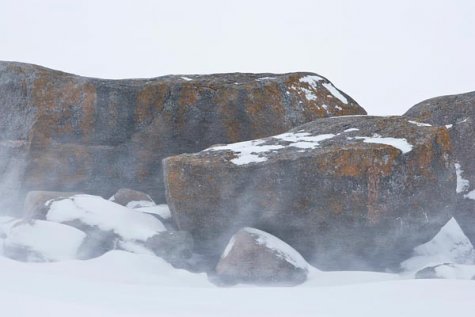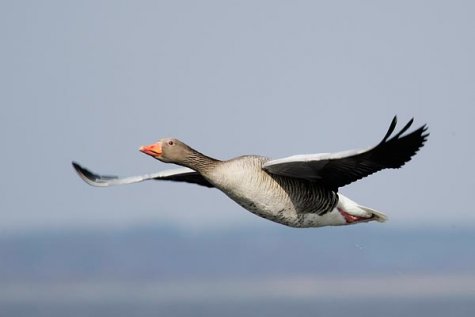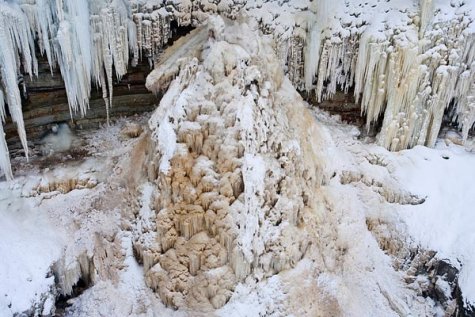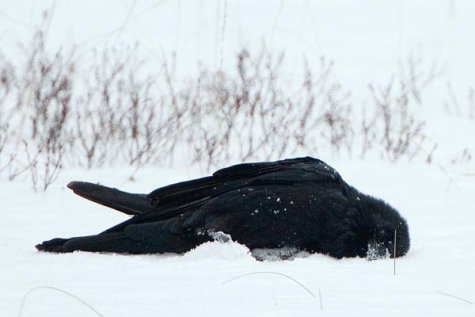Beginning of March: Asian Agents
Text: Kristel Vilbaste
Photos: Arne Ader
Translation: Liis from Forum
Western Estonia had a week of snowdrifts. Whirling snow in Matsalu.
Only recently a hoopoe visited Pärnumaa, now such a rarity as an azure tit has arrived from Siberia. It was last seen here in 1984.
The four weather signs of the week:
Black grouse on the edge of their lek area,
lynx wooings,
swelling buds and
springtime light.
In Nigula, the bird feeder, in an apple tree, was visited on Wednesday last week by an azure tit, very similar to a blue tit but lighter in colour. “It is very difficult to determine an azure tit”, says Margus Ots, recorder of bird rarities. The notice from Pärnumaa certainly needs more thorough checking, but anyway there is good reason now for all bird feeder providers and watchers to keep their eyes open. Another rarity, of whom much has been talked, the water pipit, Anthus spinoletta, from the Tatra mountains, still huddles in Paljassaare, near Nurme Street.
The first migrating birds already arrive: grey goose.
Spring birds coming
There is real joy in that according to the bird people, bird spring is just around the corner. Bird observer Mati Martinson at Sõrve has already seen the first grey geese who may really be migrants. This year, more than earlier, starlings, rooks and bullfinches have wintered here – so how to tell who are the spring harbingers then? But given sunny weather this week we should be able to hear the first lark. Mikk Sarv adds from the knowledge of people of old that when larks sing in March there will be a warm spring. But lark song in February brings a cold spring. The black grouse cocks go sit around the lek sites and draw some wing-marks on the site. Earlier we used to build grouse-spying shelters at this time, and picked last year’s cranberries from the bog tufts appearing from under the melting snow.
For Estonia’s independence day an ornamental icicle mound had formed at the Valaste stream falls.
Hares on garden raids
The mostest springtime is in the world of mammals. Lynxes yowl in the forest, beavers splash happily in the rivers in wait of the wooing time. Hedgehogs wake up everywhere and come to sniff at the spring air. Even a badger is said to have greeted the spring in Viljandi. Deer with spring-time skin-covered knobbly horns are busy so that they seem to be everywhere, and particularly they like being around farms and gardens where tasty snacks are available – fruit trees are in danger! And where the foxes have not swallowed the last hare and rabbit, fruit trees in danger of the long-ears should be seen to. Kaja Kübar says that in the Nigula wild animal rehabilitation centre all five bear cubs grow vigorously and are half as much heavier. There is already frisky play going on in a big cardboard box, boxes on ears are delivered and there is mutual wrestling – but everything is still done in silence. Only the thudding of paws is heard. Soon the feeding-bottle bears will be fed porridge.
Ravens’ play fantasy: lying on snow.
Spring colours in trees
The first day with above-zero warmth, on Wednesday, even wiped away the snow in patches in Läänemaa, but the weekend brought Christmas weather back. But the whole of the woody part of the plant kingdom has taken on spring colours – the birches are softly red, female catkin buds of alders are bulging, the male catkins still hard but red-toned. Willows are a colour riot, those with white catkins are blood-red, and the osier, suitable for basket-weaving, again is yellowish-green.
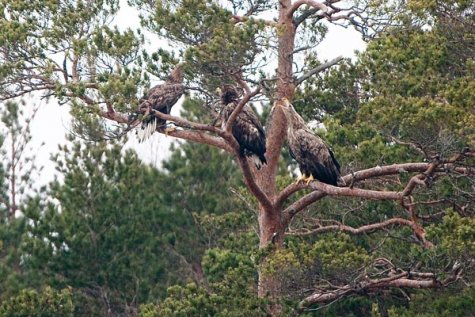
Sea-eagles’ song party ...
Take a walk in ionised forest air!
Glancing through one of our spa package offers last week I realised what a rich people we are – a short daily walk in an ionised pine forest atmosphere costs 50 Kroons at a health centre. So walking each day in a pine forest, we can save 18 250 Kroons a year, and use local products at that. On top of that gain good health. So take a forest walk and be healthy and rich! It is as simple as that.
FOR CHILDREN:
Magpie game
The magpies clearly keep together two by two, so at this time of the year it is fun to play a magpie game. Circles, measuring about one metre across, are drawn on the snow, about 3 metres from each other. Each pair of children gets themselves five one-metre-long branches and one of the children, the Mother Magpie, stays in the nest to watch over them, but the branches can only be held with one’s feet. The Magpie Males fly to the other nests to snatch branches. Only one branch at a time may be taken and brought away. When the game ends the branches are counted. But it is worth talking about what it feels like to snatch a branch, and what it feels like to have your branches stolen.
Quotation:
Take a walk in the pine forest and become healthy and rich!

